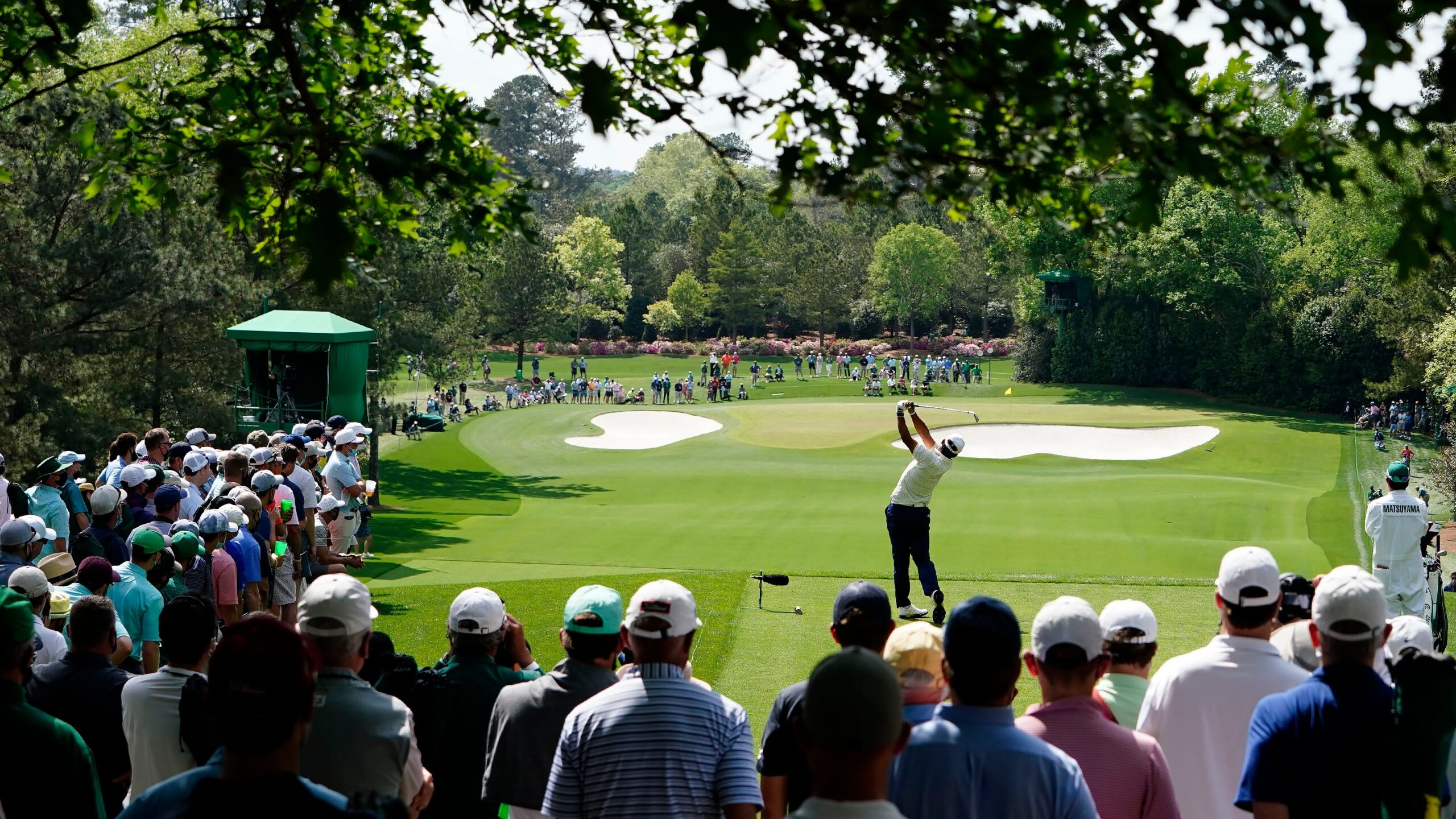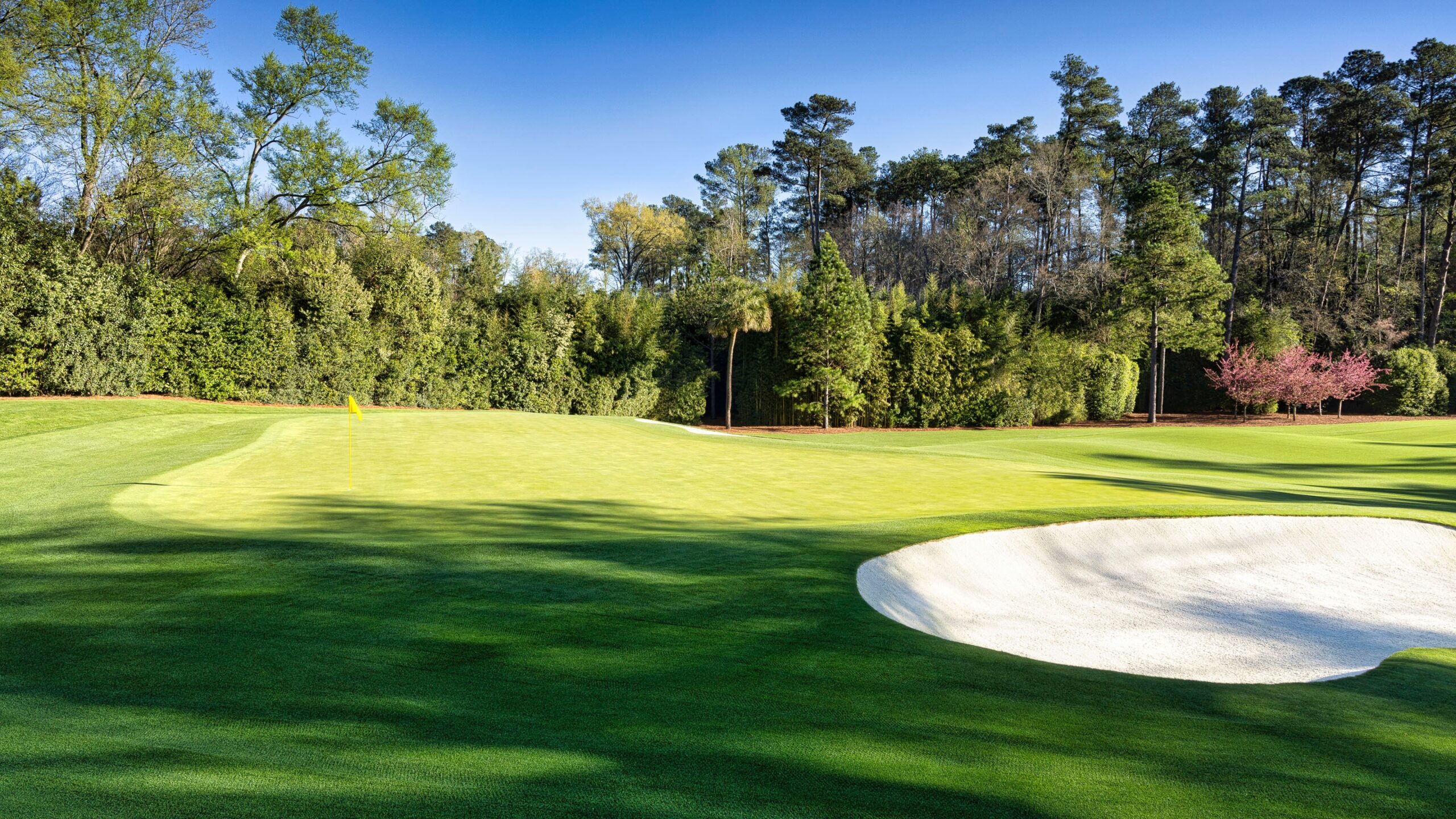Bogeys are scary. But at Augusta National, it’s the doubles that kill you.
Over the last 10 years, Masters winners have made an average of eight bogeys over the course of the tournament. No winner made more than Patrick Reed (11) in 2018 or fewer than Dustin Johnson (4) in November 2020. Just two of the last 10 winners—Scottie Scheffler in 2022 and Jordan Spieth in 2015—made a double bogey during their winning weeks. (Scheffler’s, memorably, came when he four-putted the final green with a five-shot lead.) You can live with bogeys, but doubles will probably dash your tournament hopes.
Unsurprisingly, the three holes that drew the most double bogeys during the 2022 Masters were Nos. 11, 18, and 12. That makes sense. That trio has long been regarded as the most difficult group of holes on the course. And you’d think the long par-3 4th wouldn’t be far behind.
Measuring as long as 240 yards, the course’s first one shotter is often regarded as one of the most difficult holes at Augusta National. It’s not. Just four double bogeys or worse were made on No. 4 in the entirety of the 2022 Masters, a whopping one per round.

A look at No. 4 from behind the tee box. Courtesy of the Masters Tournament.
2022 Masters – highest average score in relation to par (double bogey or worse rank)
No. 11, +0.48 (1st in total double bogeys or worse)
No. 18, +0.38 (2nd)
No. 5, +0.33 (5th)
No. 1, +0.30 (4th)
No. 4, +0.26 (14th)
No. 12, +0.23 (3rd)
As a simpleton myself, this realization was surprising. But the more you think about it, there are rarely disasters on the fourth hole. The only one that sprung to mind was Phil Mickelson’s triple bogey during the final round of the 2012 tournament. Outside of that incident, most players hit long irons or hybrids and misses will either end up in one of the greenside bunkers or long of the green. It’s pretty easy to avoid a double bogey from those positions.
The fourth is one of the most boring holes on the golf course. We’ve established that pros seldom make big numbers on No. 4, but what makes the hole a bummer is that it doesn’t give golfers much of a chance to hit one close, either. Just 10 birdies were made on the hole in 2022! More than 95% of the time, a player made par or bogey. That basically makes it a bridge hole between Nos. 3 and 5. A player who makes two threes and two fours during the week loses less than a shot on the field. Make three pars and a bogey and you’re gaining ground.
Every amateur in the world would look at a scorecard number of 240 yards and be scared of a double bogey. That does not happen with the professionals on No. 4 at Augusta National. Modern equipment and the relatively benign surrounds of the putting surface have made the hole an afterthought on a golf course filled with brilliant golf holes. It has evolved over the years and asked players to hit the same clubs Alister MacKenzie originally intended, but softer surrounds have caused it to lose its original luster.

The modest slopes behind the fourth green at Augusta National. Courtesy of the Masters Tournament
Augusta National is defined by holes that require bold play. Those who take on risk and study the slopes are rewarded throughout their round while those who play cautiously are left with even more difficult follow ups. On three of the par 3s – Nos. 6, 12, and 16 (sort of) — accurate iron shots into demanding hole locations allow the best approach players to separate over the course of a tournament. Birdies and well-earned pars are available, but so are big numbers and costly bogeys. With everyone in the same bucket on No. 4, it’s almost impossible to stand out from the crowd.
One way or another, I’d love to see more interest brought back to the fourth hole. Perhaps a shorter golf ball, like the one proposed by the USGA and R&A last month, would allow the best iron players to emerge. Or maybe the slopes surrounding the green need to be made more severe, especially given that it’s supposed to be an Eden hole. Either way, the hole is meant to test long iron play and highlight the best of the best. Right now, that’s just not happening.
More Masters coverage from The Fried Egg team:
Geoff Ogilvy’s notes on all 18 at Augusta National
The Art Behind Augusta’s Roars: Focal points in Alister MacKenzie’s routings


 by
by 
